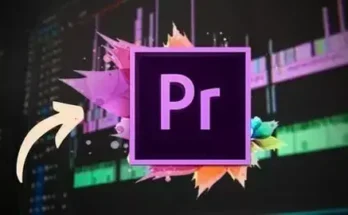Publisher: Truefire | Language: English
Video: MP4, 960×540 (16:9), 971 Kbps, 29.970 fps
Audio: MP3, 192 Kbps, 48 Khz, 2 channels
Size: 388 Mb
Understanding how to craft great chord melodies is an essential skill for the blues guitarist. Playing great solos while simultaneously holding down the accompanying harmony is truly a sign of a sophisticated and seasoned player, both on the gig and at the jam.
This Blues Chord Melody edition of Take 5 from Jason Loughlin is an accelerated curriculum designed to help get your blues chord melody chops up to speed quickly without having to struggle through a lot of tedious theory and exercises.
You’ll start the course with a quick primer where Jason will introduce you to dominant seventh inversions, using substitutions, harmonizing the blues scale, contrary motion and altered chords — all in an effort to add more harmonic depth to your blues solos.
Jason will then guide you through 5 blues chord melody performance studies, progressing from basic to more advanced applications of these blues chord melody and soloing techniques.
You’ll learn to solo with chords over a 12-bar blues starting with the basics by linking together dom 7th chord inversions with diatonic passing tones and half step approach notes. Next, Jason shows you how to incorporate IV/I, IV/IV, V/I, V/V and chromatic passing notes. You’ll learn how to add altered chords to your blues using augmented and diminished chords, and how to harmonize the blues scale with chords and tone clusters by using major 6th chords, dom 13th chords, and stacked 4ths. In the final study, you’ll make use of contrary motion by adding it to melodies and incorporating it into V/Vs and turnarounds.
Level 1: Blues Chord Melody – ”This etude is over a 12-bar blues in A. In the last four bars, we’re playing the V chord for the first two bars. There is no V|IV progression in the last four. The turnaround is just a V chord. So, the last four bars will sound as V-V-I-V. In the breakdown, we’ll go through our study note-by-note looking at the use of dominant 7th chord inversions, how to use diatonic passing tones, and incorporating the 9th into 7th chords.”
Level 2: Blues Chord Melody – ”In our second etude, we’re adding the IV/I, IV/IV, V/I and V/V. These are usually used to harmonize a melody on the high E string. They add a lot of harmonic momentum and blur the tonal center of the 12-bar blues. All of these substitutions are harmonized as dom 7ths and use the same inversions we used in the first etude.”
Level 3: Blues Chord Melody – ”In Study 3, we’ll alter chords with augmented and diminished chords. Augmented chords can be used on I chords leading to the IV or the V chord leading into I, as well as applied to V/I and V/V substitutions. Diminished chords can be used to get access to the 3rd, 5th, b7th and b9th of dominant chords. It can also be used as a half-step approach to the 3rd, 5th and the b7th.”
Level 4: Blues Chord Melody – ”Moving on to our more advanced studies, in our fourth etude, we’ll be using blues scale and harmonizing it different ways. No matter how we harmonize, we want to keep the blues scale as the highest note of the voicing. In the etude, the scale is supported by major 6th chords, 13th chords and stack 4ths. Using the augmented sound on V chords and V/V chords will help maintain the overall b3rd or bluesy sound for the etude.”
Level 5: Blues Chord Melody – ”In our last etude, we’re using contrary motion. This is the technical term for two voices moving in opposite directions. Here we’re using it three ways. First, we’re using it on octave 5ths of our dom 7th chords and chromatically moving the voices inward. Next, we’re using it within a chord change. The last concept we’re going to look at is partials. This is a pretty simple idea. Rather than playing the full 4 note chord, you can pick out any three, two or single notes you want. This can be used to be more subtle in your application of substitutions, augmented, diminished and altered chords or to lighten up the weight of a four note chord.”
Jason will explain and demonstrate all of the key concepts and approaches along the way. You’ll get standard notation and tabs for all of the Performance Studies. Plus, Jason includes all of the rhythm tracks for you to work with on your own. In addition, you’ll be able to loop or slow down any of the videos so that you can work with the lessons at your own pace.
Grab your guitar and let’s Take 5 with Jason Loughlin!
[toggle title=”Home page”]https://goo.gl/SsLVNN[/toggle]

http://alfalink.to/6ff20c6342d31611a541
Please REPORT in Comment Broken Links




